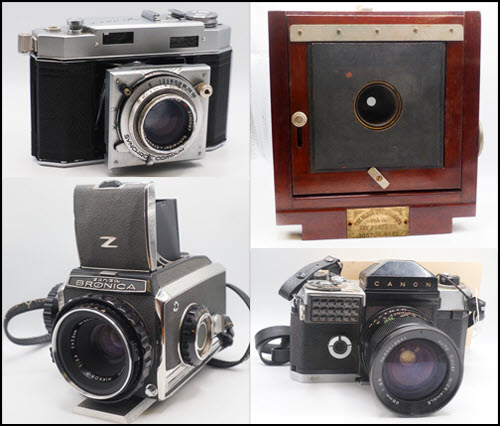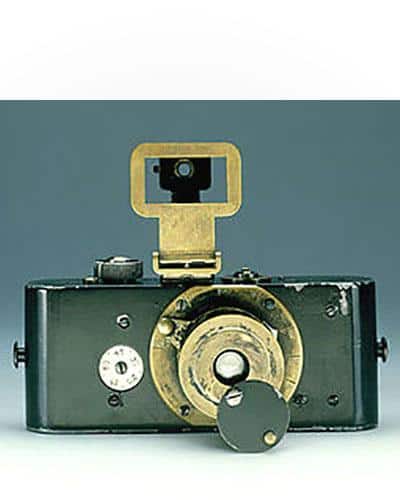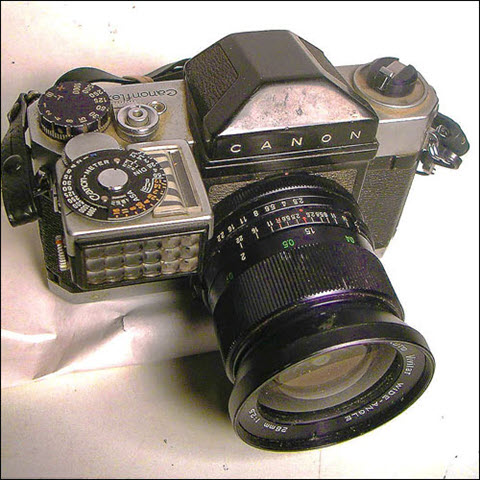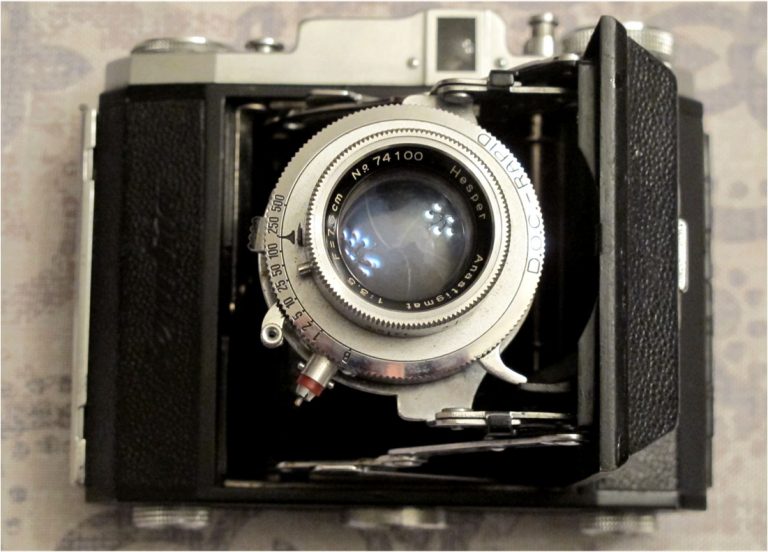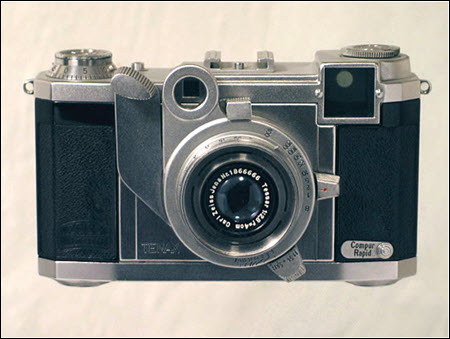Story by PHSNE Board Secretary Larry Woods, Photos by Brad Herman
This month, we look at perhaps the most advanced compact rangefinder camera ever made: the Olympus 35 SP. The time period is the 1970s and 1980s, before autofocus point-and-shoot cameras came along. The most popular compact rangefinder camera of that era was the Canon Canonet G-III QL17, with well over a million sold. The 35 SP is a very similar camera, but in my opinion superior because of a better lens and a spot meter. This camera and its successors, the Olympus 35 SPN and 35 UC, were the only compact rangefinders to ever have a built-in spot meter in addition to the center-weighted averaging meter.
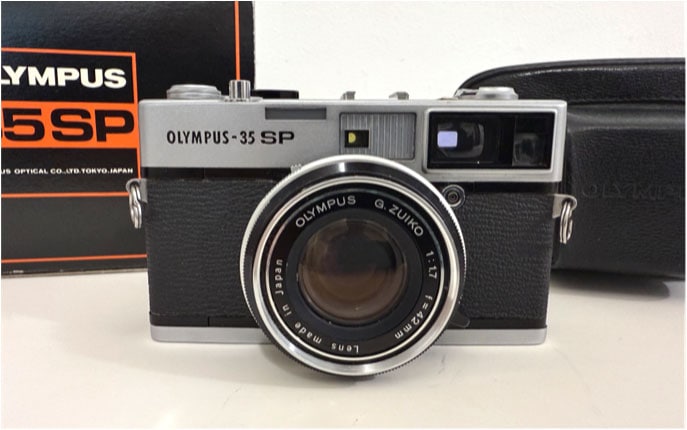
Introduced in 1969, three years before the Canon, the 35 SP has a 42mm f/1.7 G. Zuiko lens, with seven elements (G is the 7th letter of the alphabet) in a design similar to the Leica Summilux 50mm f/1.4. It can operate in manual mode, with the meter available for reference, and in aperture priority, shutter priority, and full auto exposure (program) mode. The focusing range is 2.8 feet (85 cm) to infinity, accomplished with about a 60-degree turn of a lever attached to the lens, which is coupled to a double-image rangefinder.
Shutter speeds range from 1 to 1/500 second, plus B with a 10-second self-timer, which only works in manual exposure mode. The f-stop range is 1.7 to 16 in manual mode, but extends to 22 in auto mode. The camera weighs 600 g (21 oz). Film speeds can be set to ASA (ISO) 25–800, reflecting most films available at the time, which ranged from 25 to 400. The diaphragm has five blades, common on similar cameras of this vintage, which, if visible in pictures (from, say, lens flare), is pentagonal.
Two features are arguably less advantageous than on the Canon. First, the meter “eye” is not in the lens barrel, behind any filters. If you use filters, you will need to do exposure compensation manually by adjusting the ISO speed. Second, the 35 SP does not have the QL (quick load) feature of the Canon. Film loads in the camera conventionally, like all other cameras that have hinged backs without QL—you attach the film to the take-up spool, advance the film, and then close the back. I do not find that a problem.
The lens is outstandingly sharp. It does not seem to have any distortion, even wide open, and it is sharp at all f-stops, though there is some improvement from 1.7 to 2.8. F/1.7 is the half-stop between f/2 and f/1.4. The lens’s 42mm focal length is almost the 43mm diagonal length of the 24×36mm film frame. The film frame diagonal is theoretically the focal length of a “normal” lens. Very few 35mm cameras have lenses that come close to this “normal.”
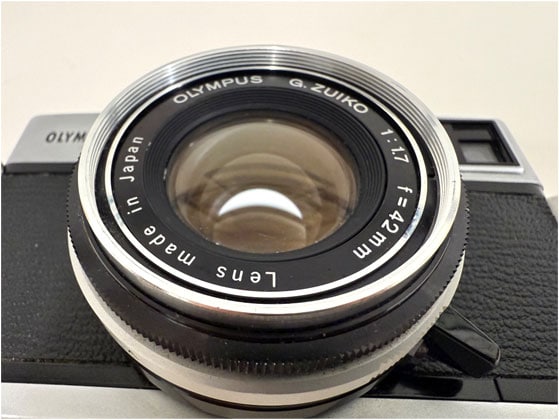
The meter output is visible above the picture image in the viewfinder. It shows EV (Exposure Value) numbers. There are EV numbers on the lens barrel linked to the shutter speeds and f-stops. In manual mode, you turn the shutter speed ring, f-stop ring, or both until you see the EV number you want. You can then turn both rings together to select a different shutter speed/f-stop for that EV number.
For automatic exposure, select shutter priority or aperture priority by selecting the shutter or aperture you want on its ring, and set the other ring to “A.” Setting both rings on “A” gives you full exposure automation—what we now call Program mode. The meter bar is color-coded. The left side is red, indicating that the scene will be overexposed. The right side is yellow, indicating that the shutter speed may be too slow for handheld use. In auto modes, just check that the indicator is not in either end. For ISO 100, the usable meter range is EV 5.5 (1/15 at f/1.7) to EV 17 (1/500 at f/16). Higher ISOs can get down to EV 3.
There is no off switch for the meter. The meter is always on in center-weighted mode. The assumption is that you use a camera case, and the camera is enclosed in darkness when not in use, which preserves the battery. To use the spot meter, press the “Spot” button on the back of the camera, below the wind lever, where your right-hand thumb rests. The spot mode covers about 9% of the picture, indicated by the bright rangefinder patch at the center of the viewfinder. The camera does not have a depth-of-field indicator, common on other lenses above or below the focusing scale.
For flash photography, there is a hot shoe and a PC cord connector. To set exposure, set a guide number for the flash on the lens body, and the camera adjusts the f-stop as you focus. The camera handles guide numbers between 32–250 feet and 20–80 meters.
The Olympus 35 SP is a delight to hold and use, and its clean design is typical for the era. The biggest operational issue is that the camera used a PX625 mercury battery, which is no longer made and unavailable. This battery was common to many cameras of the late ’60s and early ’70s. The battery issue will be discussed in the next issue of snap shots.
What the heck…
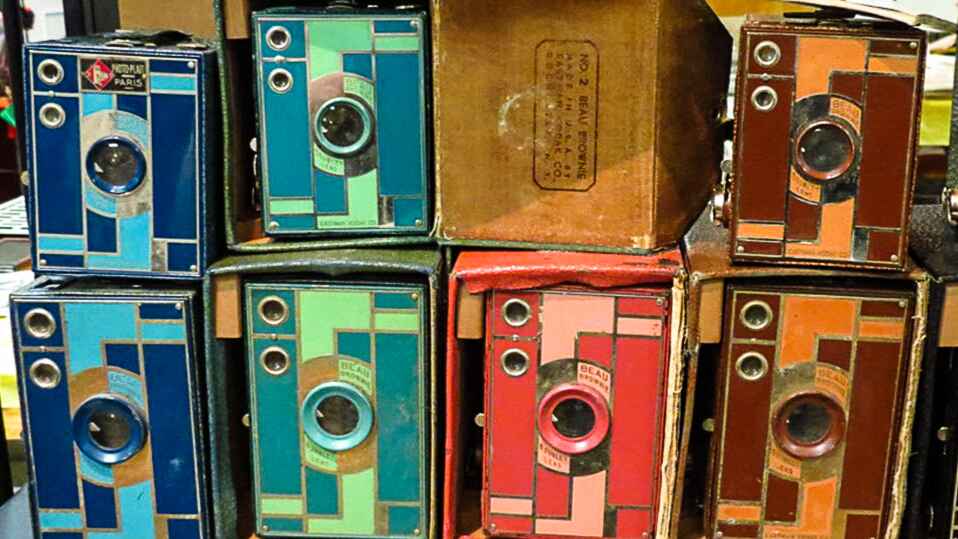
Are Those Even Cameras?!
Join the PHSNE Newsletter and learn more about photographic history and preservation. Already an expert? Come and share your collections and knowledge as we celebrate the history and advancement of photography.

